EARTHBOUND
By Thomas Connors
PHOTOGRAPHY BY RUNVIJAY PAUL
STYLING BY THERESA DEMARIA
Zachary Weber in his Chicago studio.
By Thomas Connors
PHOTOGRAPHY BY RUNVIJAY PAUL
STYLING BY THERESA DEMARIA
Zachary Weber in his Chicago studio.

One doesn’t immediately think of “risk-taking” when it comes to ceramics. After all, clay most commonly finds its way to us in the form of dinnerware, tile work, and vessels for the garden. But there are those, like the 19th-century potter George Ohr and the contemporary Los Angeles-based sculptor Julia Haft-Candell, who’ve taken their medium in surprising, sometimes confounding directions. Count Chicagoan Zachary Weber among them.

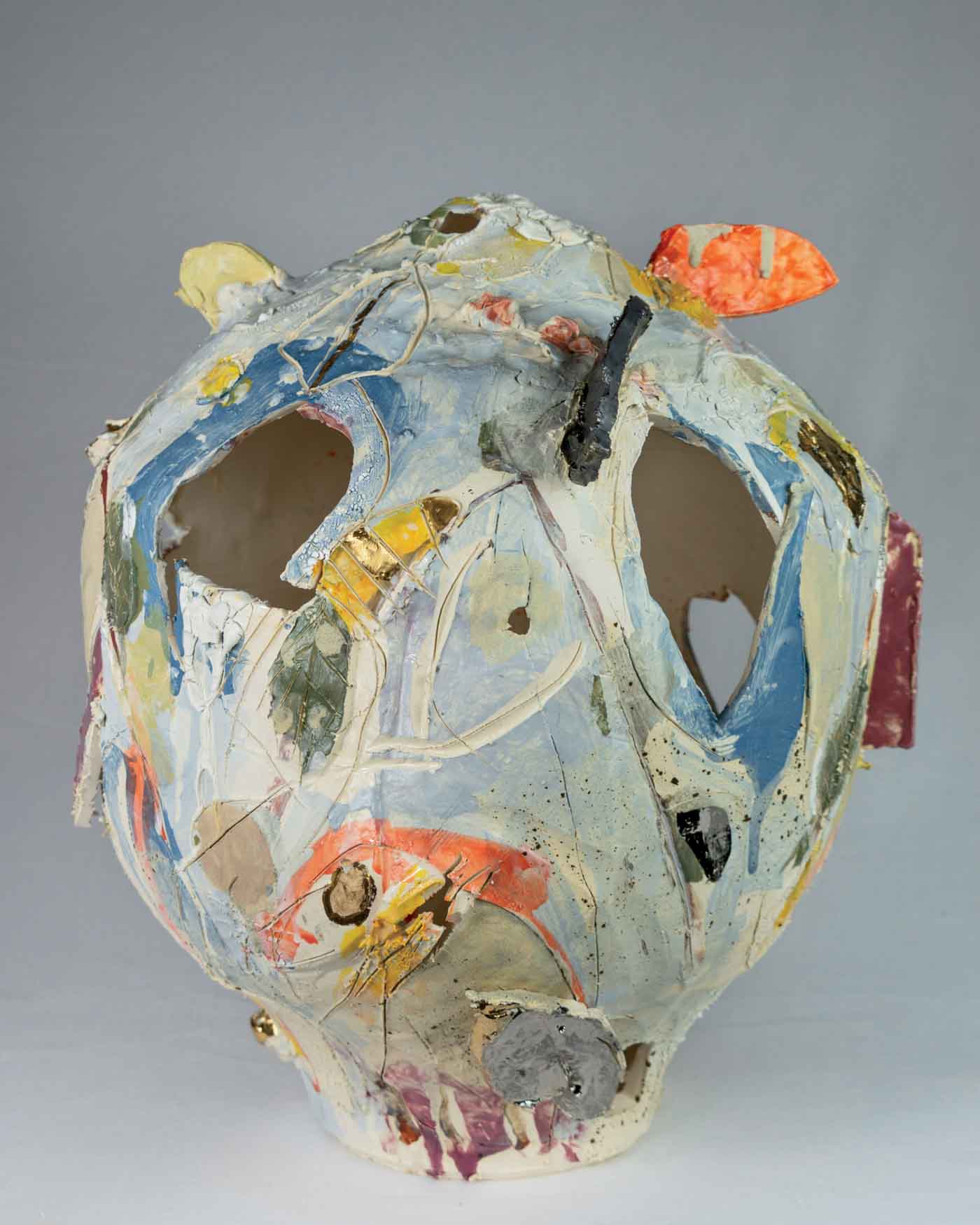
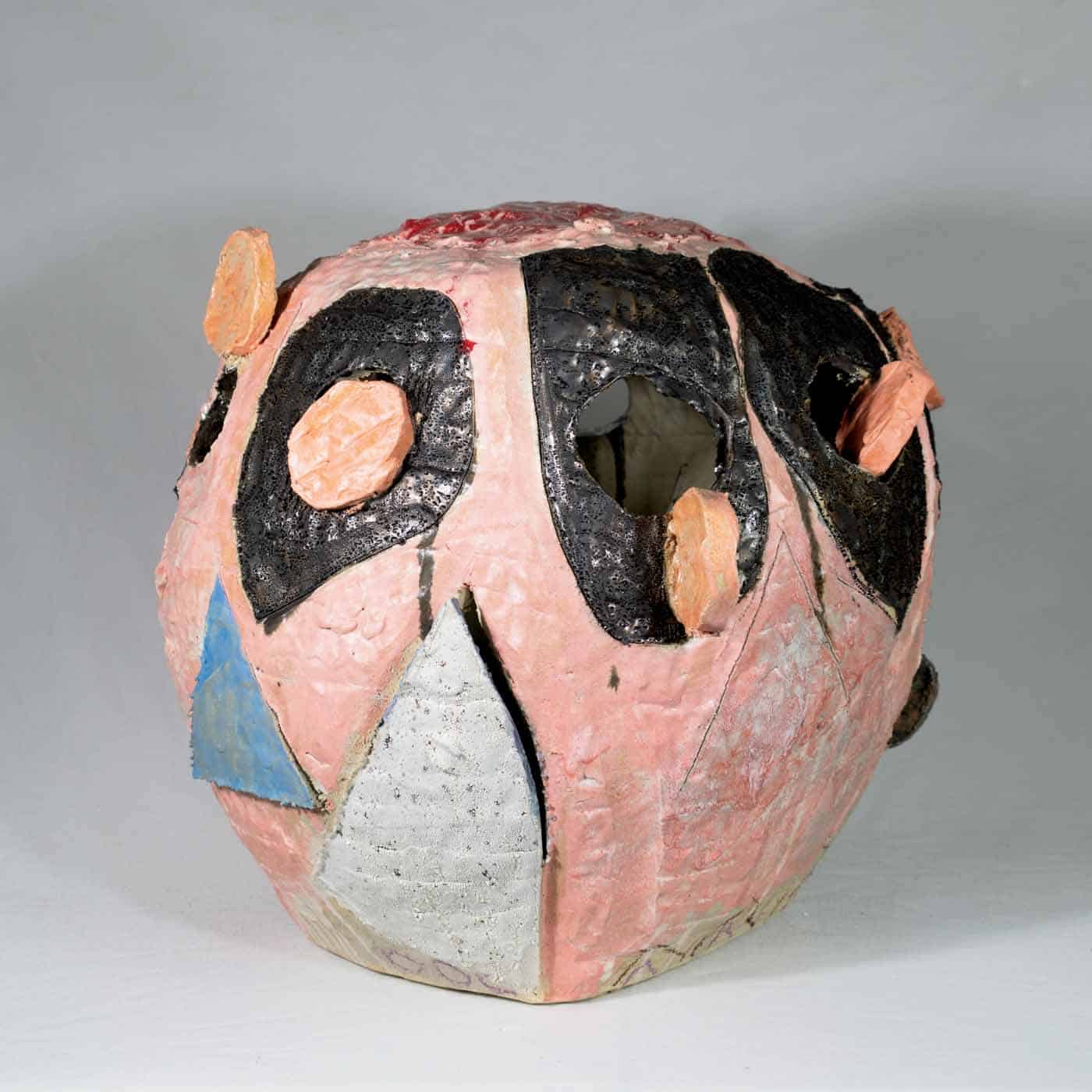
Raised in Lincoln Park, Weber took up pottery in high school and earned his BFA at the School of the Art Institute of Chicago. However, his creative impulse announced itself early on. “I used to explore my backyard, pulling off vines from the ivy growing on the fence and fastening them into dream catchers for my mother, and I was always involved in collecting rocks and fossils,” he recalls. “I saw no hierarchy in placing semi-precious stones next to spray-painted fragments of concrete.”
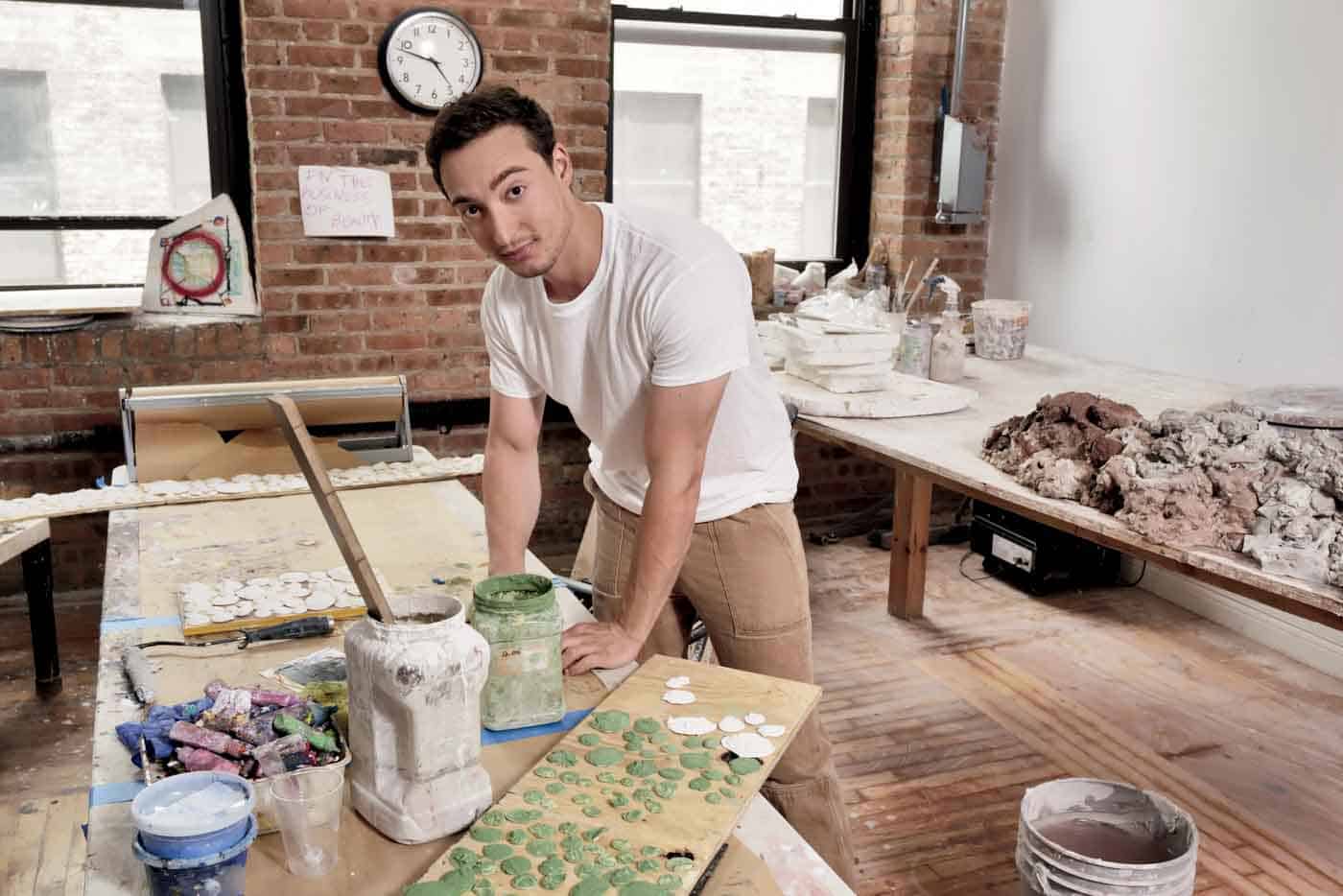
The willingness to play with material beyond the bounds of accepted hierarchies, to embrace contrast and contradiction, informs Weber’s work today, which ranges from amphora-shaped forms marked by smiley faces shot from spray paint to Flowers in Repose, in which blossoms droop in cracked pots. Color plays a key and eye-pleasing role in Seedlings, pod-like pieces with dynamically articulated surfaces.
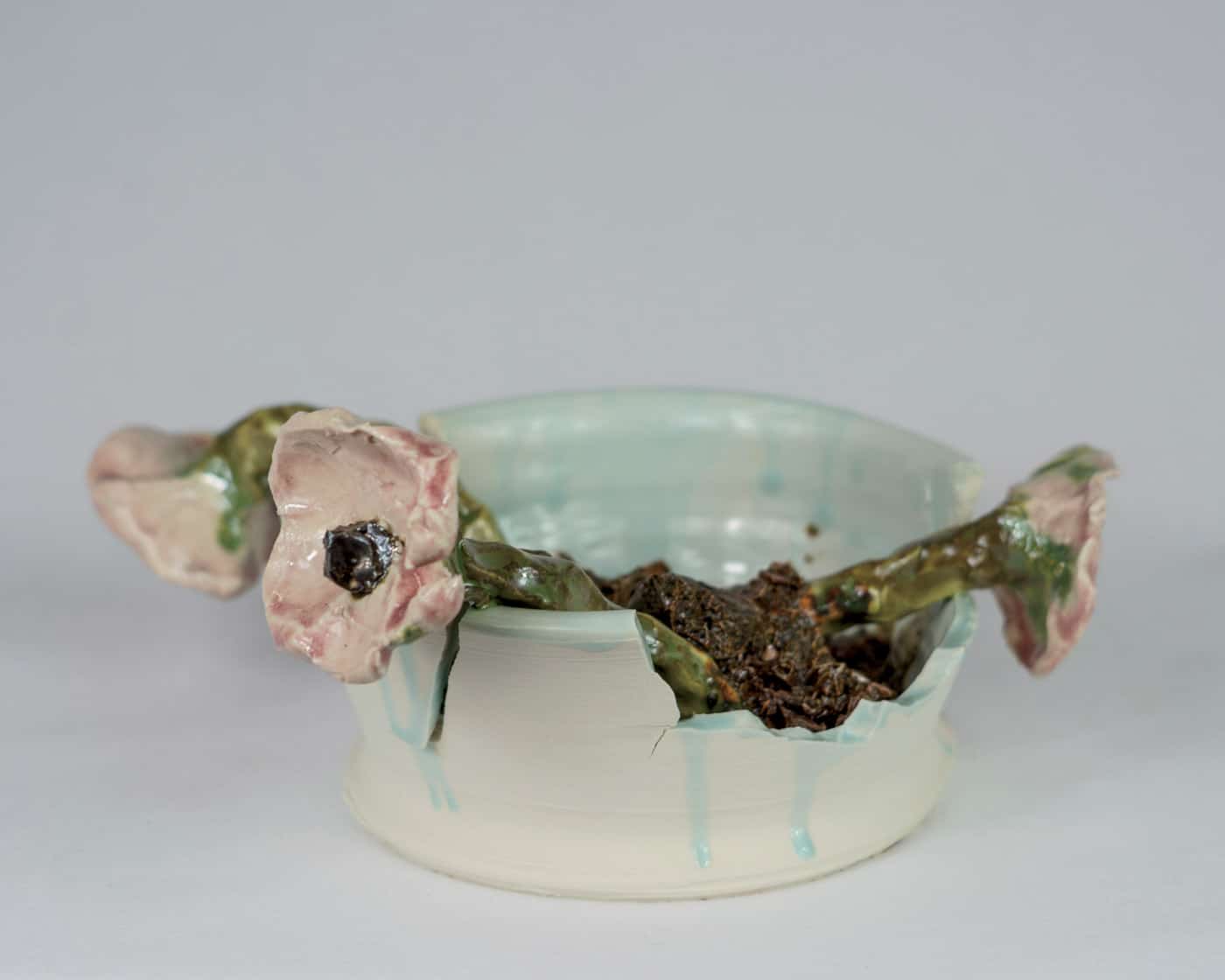
An experienced photographer who has delighted in shooting the banal and unexceptional—snaps of paper on the sidewalk, a shadow on an alleyway wall—Weber approaches his ceramic projects with a similar readiness to welcome the random, to look around and let the ideas arise later. “I’m invested in ‘finding’ or allowing for the conditions for these moments to appear in my ceramic practice,” says Weber, whose work has been shown at Art Miami with Zolla/Lieberman Gallery and The Art Center Highland Park. “Usually I’ll make a mark, follow up with another mark or a dab of color and see where it goes. If there’s one guiding principle between all my practices, it is to not think, but do, to embrace process at all costs and steer far away from anticipating results. And pay attention.”

The bulk of Weber’s pieces are fashioned using a coil building technique. “This is perhaps one of the oldest methods of building with clay,” explains Weber. “Coils look like long earthworms, but when stacked upon themselves with critical manipulation of each coil, a form emerges. Then the question is to what extent do I eliminate the physical evidence of the coil?” Weber cuts forms out of the stacked coils and reintegrates them into the mass of clay, then introduces various other materials—a bit of 24-karat gold, a glaze drip—to create layered, multi-dimensional objects.
The ceramics world has long contended with theoretical divisions between utility and expression. Can a pitcher be art? Is a pitcher really a pitcher if it can’t hold water? Weber doesn’t trouble himself with such concerns. His thinking is both more fundamental and open-ended. “What is ceramics supposed to look like?” he asks. “Chicago bricks and Ming Dynasty vases look dramatically different, yet it’s still earth. I make that comparison not facetiously, but because I think it’s important for people to understand the sheer diversity of the material. I’m interested in how we place value on the material when it’s crafted into different objects. Perhaps the value lies, partially, in the knowledge of processes. Creating a brick requires less conventional labor than creating a vase. At the same time, we need the brick to enjoy the vase inside our homes.”
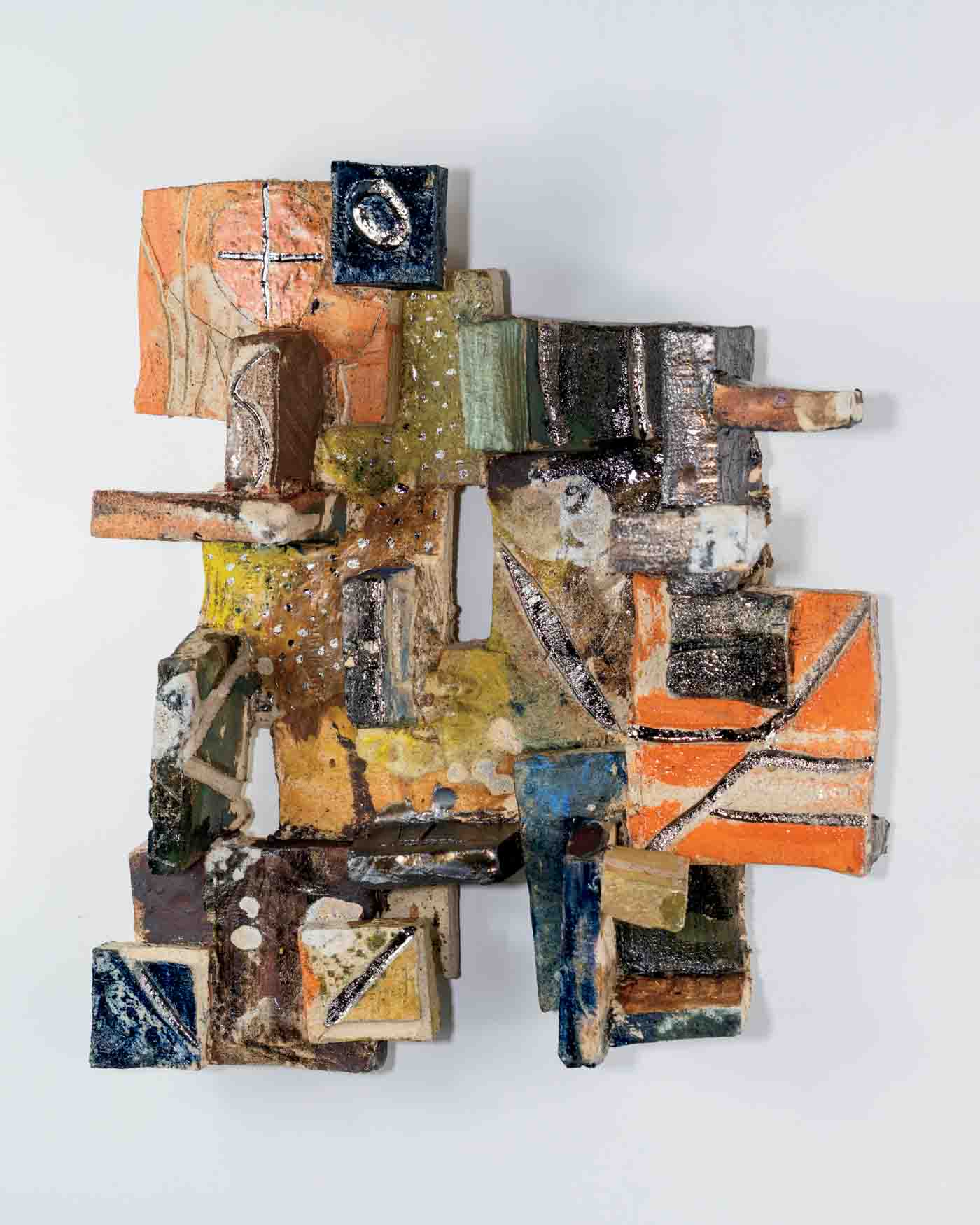
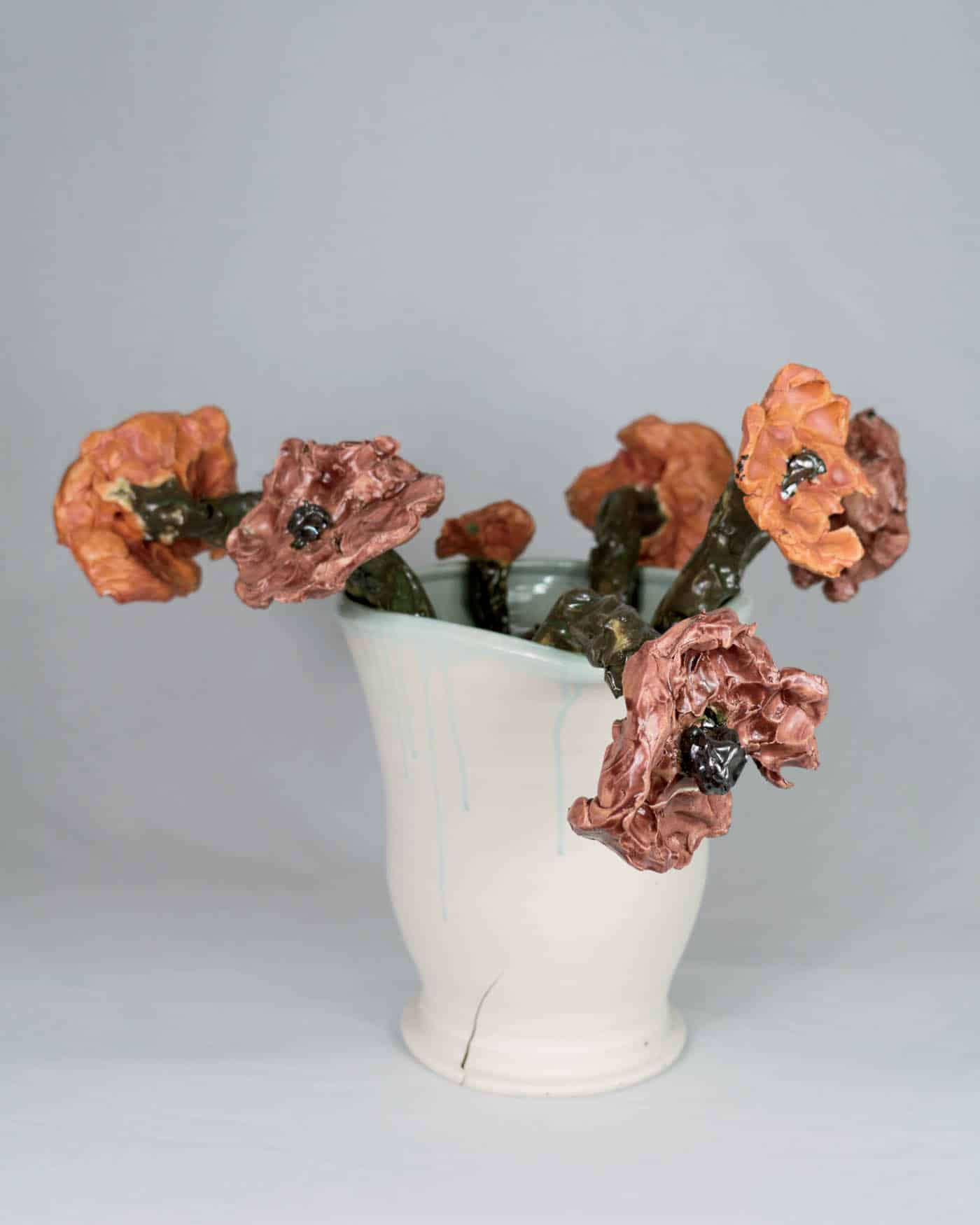
Weber’s appreciation for the everyday and the exquisite, for the useful and the experimental, is a constant. He cites his recent work, String Theory, as a “profound breakthrough,” in which “the coils are organized into configurations that both reference themselves and an imaginary form using the negative space of the wall.” At the same time, he’s crafting some sake cups for his father. Form and function. They may not share the same space, but whether united or operating in isolation, they are as much the stuff of Weber’s work as the clay itself.
For more information, visit zweberart.com.
Sign Up for the JWC Media Email